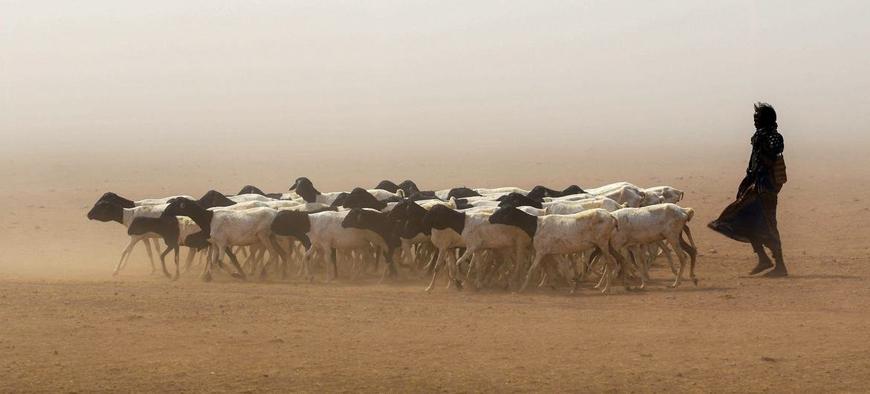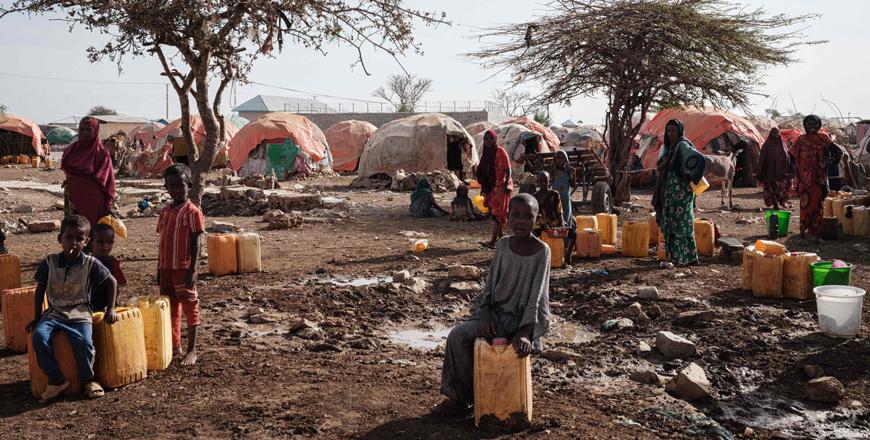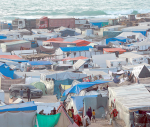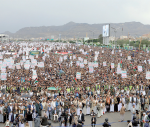You are here
13 million face hunger as Horn of Africa drought worsens — UN
By AFP - Feb 08,2022 - Last updated at Feb 08,2022
NAIROBI — An estimated 13 million people in Kenya, Somalia and Ethiopia are facing severe hunger as the Horn of Africa experiences its worst drought in decades, the United Nations said on Tuesday.
Three consecutive rainy seasons have failed as the region has recorded its driest conditions since 1981, the UN's World Food Programme (WFP) said.
The drought has destroyed crops and inflicted "abnormally" high livestock deaths, forcing rural families who rely on herding and farming to abandon their homes.
Water and grazing land is in short supply and forecasts of below-average rainfall in the coming months only threaten more misery, said Michael Dunford, WFP's regional director in East Africa.
"Harvests are ruined, livestock are dying, and hunger is growing as recurrent droughts affect the Horn of Africa," he said in a statement.
"The situation requires immediate humanitarian action" to avoid a repeat of a crisis like that of Somalia in 2011, when 250,000 died of hunger during a prolonged drought.
Speaking to journalists in Geneva, WFP spokesman Tomson Phiri described the scene he witnessed during a recent trip to northeastern Kenya.
“While it’s common to see dead livestock by the roadside... this time, they have not been hit by passing vehicles: They have died from thirst and starvation and died in large numbers,” he said.
“The drought is widespread, severe and likely to grow worse.”
Food aid is being distributed across an arid swathe of Kenya, Ethiopia and Somalia where malnutrition rates are high and some 13 million people are at risk of severe hunger in the first quarter of this year.
‘Catastrophe’
The UN children’s agency meanwhile assesses that as many as 20 million people in those three countries, plus Eritrea, will need water and food assistance over the next six months.
Mohamed Fall, UNICEF’s regional director for eastern and southern Africa, said the situation was particularly dire for children and families.
Nearly 5.5 million children in the four countries are threatened by acute malnutrition, while 1.4 million risked falling into severe acute malnutrition, which can lead to death.
“UNICEF fears this number will increase by 50 per cent if rains don’t come in the next three months,” Fall told reporters in Geneva via video-link.
“The needs are massive and urgent, and they are quickly outpacing the available funds to respond,” he said.
“We need to act now to prevent a catastrophe.”
According to WFP, some 5.7 million already need food assistance in southern and southeastern Ethiopia, including half-a-million malnourished children and mothers.
In Somalia, the number of people classified as seriously hungry is expected to rise from 3.5 million to 4.6 million by May unless urgent interventions are taken.
Another 2.8 million people need assistance in south-eastern and northern Kenya, where a drought emergency was declared in September.
WFP said $327 million was required to respond to immediate needs over the next six months and support pastoral communities to become more resilient against recurring climate shocks.
UNICEF meanwhile is appealing for $123 million to cover life-saving needs in Ethiopia, Eritrea, Somalia and Kenya through to the end of June.
In 2011, failed rains led to the driest year since 1951 in arid regions of Kenya, Somalia, Ethiopia, Djibouti and Uganda.
Experts say extreme weather events are happening with increased frequency and intensity due to climate change — with Africa, which contributes the least to global warming, bearing the brunt.
Related Articles
GENEVA — The devastating Horn of Africa drought is set to get even worse with a fifth consecutive failed rainy season, the UN's weather agen
GENEVA — Around 730 children have died in nutrition centres across Somalia since January, the United Nations said on Tuesday, warning the tr
NAIROBI — Millions of people in Somalia are at risk of famine, with young children the most vulnerable to the worsening drought, UN agencies



















